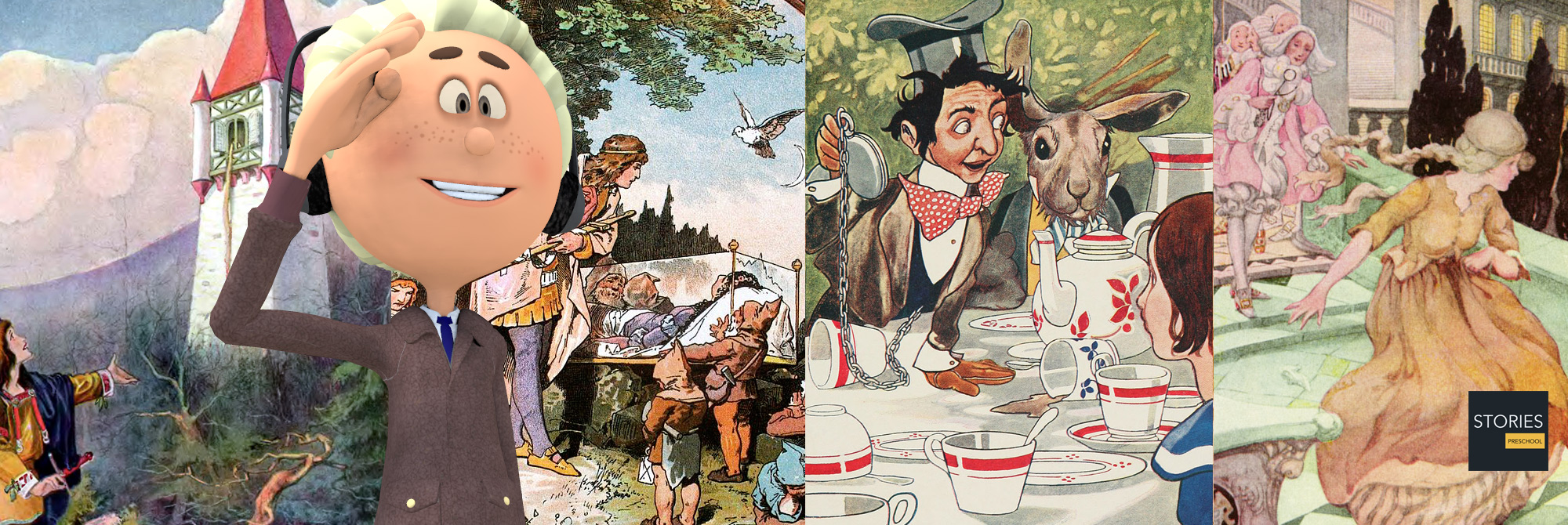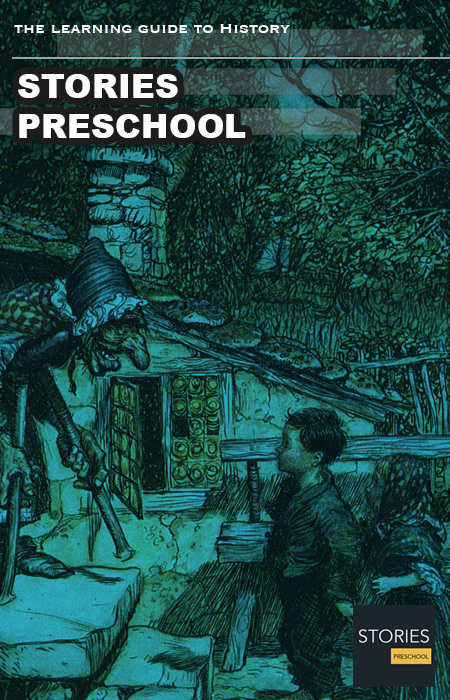Fairy tale
A fairy tale (pronounced /ˈfeəriˌteɪl/) is a type of short story that typically features folkloric fantasy characters, such as dwarves, elves, fairies, giants, gnomes, goblins, mermaids, trolls, or witches, and usually magic or enchantments. Fairy tales may be distinguished from other folk narratives such as legends (which generally involve belief in the veracity of the events described) and explicitly moral tales, including beast fables. The term is mainly used for stories with origins in European tradition and, at least in recent centuries, mostly relates to children's literature.
In less technical contexts, the term is also used to describe something blessed with unusual happiness, as in "fairy tale ending" (a happy ending) or "fairy tale romance" (though not all fairy tales end happily). Colloquially, a "fairy tale" or "fairy story" can also mean any far-fetched story or tall tale; it is used especially of any story that not only is not true, but could not possibly be true. Legends are perceived as real; fairy tales may merge into legends, where the narrative is perceived both by teller and hearers as being grounded in historical truth. However, unlike legends and epics, they usually do not contain more than superficial references to religion and actual places, people, and events; they take place once upon a time rather than in actual times.
Fairy tales are found in oral and in literary form; the name "fairy tale" was first ascribed to them by Madame d'Aulnoy in the late 17th century. Many of today's fairy tales have evolved from centuries-old stories that have appeared, with variations, in multiple cultures around the world. The history of the fairy tale is particularly difficult to trace because only the literary forms can survive. Still, according to researchers at universities in Durham and Lisbon, such stories may date back thousands of years, some to the Bronze Age more than 6,000 years ago. Fairy tales, and works derived from fairy tales, are still written today.
Folklorists have classified fairy tales in various ways. The Aarne-Thompson classification system and the morphological analysis of Vladimir Propp are among the most notable. Other folklorists have interpreted the tales' significance, but no school has been definitively established for the meaning of the tales.
Terminology
Some folklorists prefer to use the German term Märchen or "wonder tale" to refer to the genre over fairy tale, a practice given weight by the definition of Thompson in his 1977 [1946] edition of The Folktale: "a tale of some length involving a succession of motifs or episodes. It moves in an unreal world without definite locality or definite creatures and is filled with the marvelous. In this never-never land, humble heroes kill adversaries, succeed to kingdoms and marry princesses." The characters and motifs of fairy tales are simple and archetypal: princesses and goose-girls; youngest sons and gallant princes; ogres, giants, dragons, and trolls; wicked stepmothers and false heroes; fairy godmothers and other magical helpers, often talking horses, or foxes, or birds; glass mountains; and prohibitions and breaking of prohibitions.
A fairy tale with a tragic rather a happy end is called an anti-fairy tale.
History
The oral tradition of the fairy tale came long before the written page. Tales were told or enacted dramatically, rather than written down, and handed down from generation to generation. Because of this, the history of their development is necessarily obscure and blurred. Fairy tales appear, now and again, in written literature throughout literate cultures, as in The Golden Ass, which includes Cupid and Psyche (Roman, 100–200 AD), or the Panchatantra (India 3rd century BCE), but it is unknown to what extent these reflect the actual folk tales even of their own time. The stylistic evidence indicates that these, and many later collections, reworked folk tales into literary forms. What they do show is that the fairy tale has ancient roots, older than the Arabian Nights collection of magical tales (compiled circa 1500 AD), such as Vikram and the Vampire, and Bel and the Dragon. Besides such collections and individual tales, in China, Taoist philosophers such as Liezi and Zhuangzi recounted fairy tales in their philosophical works. In the broader definition of the genre, the first famous Western fairy tales are those of Aesop (6th century BC) in ancient Greece.
Jack Zipes writes in When Dreams Came True, "There are fairy tale elements in Chaucer's The Canterbury Tales, Edmund Spenser's The Faerie Queene, and ... in many of William Shakespeare plays." King Lear can be considered a literary variant of fairy tales such as Water and Salt and Cap O' Rushes. The tale itself resurfaced in Western literature in the 16th and 17th centuries, with The Facetious Nights of Straparola by Giovanni Francesco Straparola (Italy, 1550 and 1553), which contains many fairy tales in its inset tales, and the Neapolitan tales of Giambattista Basile (Naples, 1634–6), which are all fairy tales. Carlo Gozzi made use of many fairy tale motifs among his Commedia dell'Arte scenarios, including among them one based on The Love For Three Oranges (1761). Simultaneously, Pu Songling, in China, included many fairy tales in his collection, Strange Stories from a Chinese Studio (published posthumously, 1766). The fairy tale itself became popular among the précieuses of upper-class France (1690–1710), and among the tales told in that time were the ones of La Fontaine and the Contes of Charles Perrault (1697), who fixed the forms of Sleeping Beauty and Cinderella. Although Straparola's, Basile's and Perrault's collections contain the oldest known forms of various fairy tales, on the stylistic evidence, all the writers rewrote the tales for literary effect.
Later works
The first collectors to attempt to preserve not only the plot and characters of the tale, but also the style in which they were told, were the Brothers Grimm, collecting German fairy tales; ironically, this meant although their first edition (1812 and 1815) remains a treasure for folklorists, they rewrote the tales in later editions to make them more acceptable, which ensured their sales and the later popularity of their work.
Such literary forms did not merely draw from the folktale, but also influenced folktales in turn. The Brothers Grimm rejected several tales for their collection, though told orally to them by Germans, because the tales derived from Perrault, and they concluded they were thereby French and not German tales; an oral version of Bluebeard was thus rejected, and the tale of Little Briar Rose, clearly related to Perrault's The Sleeping Beauty, was included only because Jacob Grimm convinced his brother that the figure of Brynhildr, from much earlier Norse mythology, proved that the sleeping princess was authentically Germanic folklore.
This consideration of whether to keep Sleeping Beauty reflected a belief common among folklorists of the 19th century: that the folk tradition preserved fairy tales in forms from pre-history except when "contaminated" by such literary forms, leading people to tell inauthentic tales. The rural, illiterate, and uneducated peasants, if suitably isolated, were the folk and would tell pure folk tales. Sometimes they regarded fairy tales as a form of fossil, the remnants of a once-perfect tale. However, further research has concluded that fairy tales never had a fixed form, and regardless of literary influence, the tellers constantly altered them for their own purposes.
The work of the Brothers Grimm influenced other collectors, both inspiring them to collect tales and leading them to similarly believe, in a spirit of romantic nationalism, that the fairy tales of a country were particularly representative of it, to the neglect of cross-cultural influence. Among those influenced were the Russian Alexander Afanasyev (first published in 1866), the Norwegians Peter Christen Asbjørnsen and Jørgen Moe (first published in 1845), the Romanian Petre Ispirescu (first published in 1874), the English Joseph Jacobs (first published in 1890), and Jeremiah Curtin, an American who collected Irish tales (first published in 1890).
Ethnographers collected fairy tales throughout the world, finding similar tales in Africa, the Americas, and Australia; Andrew Lang was able to draw on not only the written tales of Europe and Asia, but those collected by ethnographers, to fill his "coloured" fairy books series. They also encouraged other collectors of fairy tales, as when Yei Theodora Ozaki created a collection, Japanese Fairy Tales (1908), after encouragement from Lang. Simultaneously, writers such as Hans Christian Andersen and George MacDonald continued the tradition of literary fairy tales. Andersen's work sometimes drew on old folktales, but more often deployed fairytale motifs and plots in new tales. MacDonald incorporated fairytale motifs both in new literary fairy tales, such as The Light Princess, and in works of the genre that would become fantasy, as in The Princess and the Goblin or Lilith.
Association with children
Originally, adults were the audience of a fairy tale just as often as children. Literary fairy tales appeared in works intended for adults, but in the 19th and 20th centuries the fairy tale became associated with children's literature.
The précieuses, including Madame d'Aulnoy, intended their works for adults, but regarded their source as the tales that servants, or other women of lower class, would tell to children. Indeed, a novel of that time, depicting a countess's suitor offering to tell such a tale, has the countess exclaim that she loves fairy tales as if she were still a child. Among the late précieuses, Jeanne-Marie Le Prince de Beaumont redacted a version of Beauty and the Beast for children, and it is her tale that is best known today. The Brothers Grimm titled their collection Children's and Household Tales and rewrote their tales after complaints that they were not suitable for children.
In the modern era, fairy tales were altered so that they could be read to children. The Brothers Grimm concentrated mostly on sexual references; Rapunzel, in the first edition, revealed the prince's visits by asking why her clothing had grown tight, thus letting the witch deduce that she was pregnant, but in subsequent editions carelessly revealed that it was easier to pull up the prince than the witch. On the other hand, in many respects, violence particularly when punishing villains was increased. Other, later, revisions cut out violence; J. R. R. Tolkien noted that The Juniper Tree often had its cannibalistic stew cut out in a version intended for children. The moralizing strain in the Victorian era altered the classical tales to teach lessons, as when George Cruikshank rewrote Cinderella in 1854 to contain temperance themes. His acquaintance Charles Dickens protested, "In an utilitarian age, of all other times, it is a matter of grave importance that fairy tales should be respected."
Psychoanalysts such as Bruno Bettelheim, who regarded the cruelty of older fairy tales as indicative of psychological conflicts, strongly criticized this expurgation, because it weakened their usefulness to both children and adults as ways of symbolically resolving issues.
The adaptation of fairy tales for children continues. Walt Disney's influential Snow White and the Seven Dwarfs was largely (although certainly not solely) intended for the children's market. The anime Magical Princess Minky Momo draws on the fairy tale Momotarō. Jack Zipes has spent many years working to make the older traditional stories accessible to modern readers and their children.
Compilations
Authors and works:
- Mixed Up Fairy Tales
- Alan Garner's Book of British Fairy Tales (United Kingdom, 1984) by Alan Garner
- Fairy Tales (USA, 1965) by E. E. Cummings
- Fairy Tales, Now First Collected: To which are prefixed two dissertations: 1. On Pygmies. 2. On Fairies (England, 1831) by Joseph Ritson
- Giovanni Francesco Straparola (Italy, 16th century)
- Grimms' Fairy Tales (Germany, 1812–1857)
- Hans Christian Andersen (Denmark, 1805–1875)
- Italian Folktales (Italy, 1956) by Italo Calvino
- Joseph Jacobs (1854–1916)
- Legende sau basmele românilor (Romania, 1874) by Petre Ispirescu
- Madame d'Aulnoy (France, 1650–1705)
- Norwegian Folktales (Norway, 1845–1870) by Peter Christen Asbjørnsen and Jørgen Moe
- Narodnye russkie skazki (Russia, 1855–1863) by Alexander Afanasyev
- Pentamerone (Italy, 1634–1636) by Giambattista Basile
- Charles Perrault (France, 1628–1703)
- Panchatantra (India, 3rd century BCE)
- Popular Tales of the West Highlands (Scotland, 1862) by John Francis Campbell
- Ruth Manning-Sanders (Wales, 1886–1988)
- Franz Xaver von Schönwerth (Germany, 1810-1886)
- Kunio Yanagita (Japan, 1875–1962)
- World Tales (United Kingdom, 1979) by Idries Shah
List of Fairy Tales
- The Adventures of Pinocchio
- Aladdin
- Alice's Adventures in Wonderland
- Bambi, a Life in the Woods
- Beauty and the Beast
- Henny Penny / Chicken Little
- Cinderella
- The Elves and the Shoemaker
- The Frog Prince; or, Iron Henry
- Goldilocks and the Three Bears
- Hansel and Gretel
- Jack and the Beanstalk
- The Little Mermaid
- Little Red Riding Hood
- The Nutcracker and the Mouse King
- Rapunzel
- Rumpelstiltskin
- Sleeping Beauty
- Snow White
- The Three Little Pigs
- Thumbelina
- The Tinderbox
- The Tortoise and the Hare
- The Ugly Duckling
LITERATURE FAIRY TALES
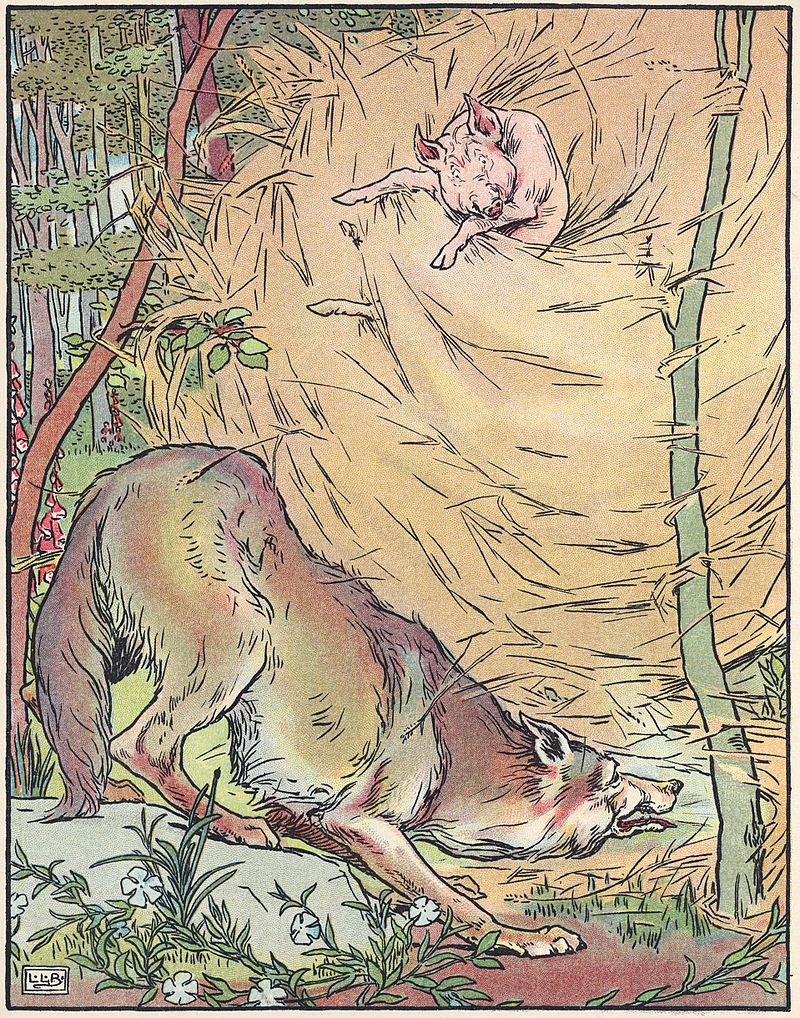
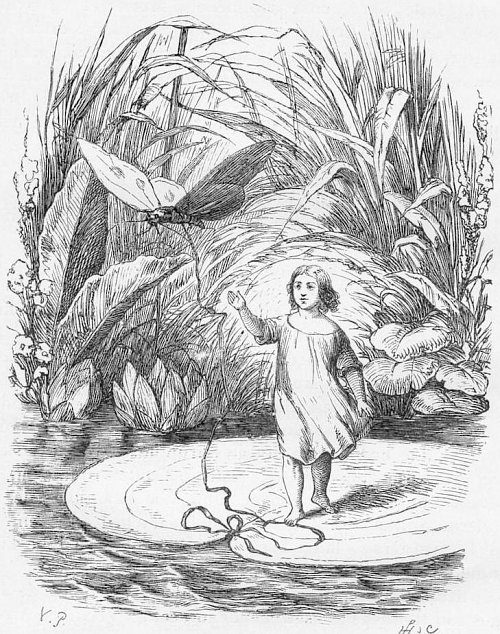
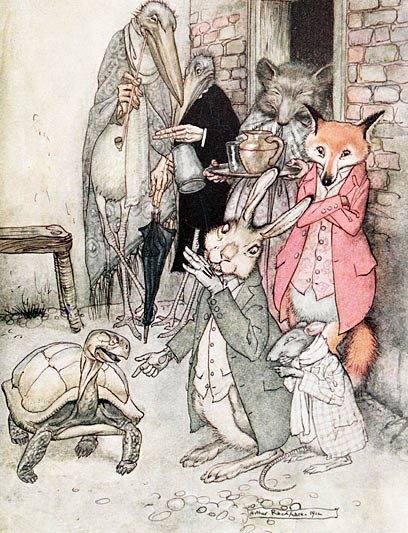
A fairy tale is a type of short story that typically features folkloric fantasy characters, such as dwarves, elves, fairies, giants, gnomes, goblins, mermaids, trolls, or witches, and usually magic or enchantments. Fairy tales may be distinguished from other folk narratives such as legends (which generally involve belief in the veracity of the events described) and explicitly moral tales, including beast fables. The term is mainly used for stories with origins in European tradition and, at least in recent centuries, mostly relates to children's literature.
List of Fairy tales »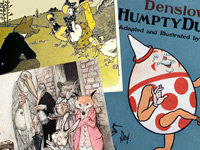
RESOURCES
This article uses material from the Wikipedia articles "List of fairy tales" and "Fairy tale", which is released under the Creative Commons Attribution-Share-Alike License 3.0.
© Stories Preschool. All Rights Reserved.
